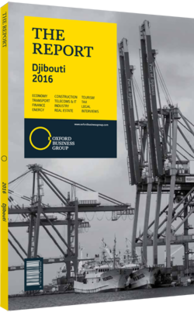New free trade areas to boost Djibouti's economic growth
As part of its strategy to become a major centre of commerce in the region, Djibouti is complementing the development of new transport infrastructure with the establishment of new trade areas.
Full Capacity
Free trade areas (FTAs) – which look to provide fiscal and bureaucratic incentives for businesses, as well as turnkey infrastructure – are not new for Djibouti. The first FTA to be set up, the Djibouti Free Zone, opened its doors in 2004, and has been fully occupied since 2011. The zone currently hosts 169 companies from 39 countries, according to Aboubaker Omar Hadi, the president of Djibouti Ports and Free Zones Authority (DPFZ), quoted in international media.
The country’s location was part of the attraction, but the success of the first trade area was also predicated on the special conditions established to make it attractive for international companies. It offered a 100% foreign ownership status to businesses, no corporate tax, permission to repatriate 100% of profits and capital as well as zero restrictions on employee recruitment. Furthermore, companies have also been able rely on the relative security of Djibouti’s currency stability, with the Djiboutian franc pegged to the US dollar. Now, the government wants to replicate the model, on a much larger scale.
Large-Scale Trading
One of the most important projects will be the establishment of a new 3500-ha free trade zone, which the government expects will be able to employ 340,000 people over the coming 10 years it will take to fully develop the zone. The new area will absorb the existing free trade zone, which will be moved to the new location, and will target industries such as ICT equipment, electronics and light industrial and construction equipment. The total cost of investment to build the new FTA is expected to reach up to $3.5bn, and will be financed largely by Beijing. The construction of the zone will be undertaken by China Merchants Group, with the site expected to be operational by 2018.
The size and level of activity expected from the new trading area is significant. Not only will the new free trade zone be the largest in Africa, but the necessary requirements in terms of human resources needed to staff the new warehousing and production units the zone aims for far outstrip the country’s current labour force capacity. The DPFZ has estimated that the country will need to train up to 34,000 workers every year just to supply the needs of the new free trade zone.
Another challenge for the country will be securing the necessary energy supply. The DPFZ expects the electricity needs of the new free trade zone to be as high as 3500 MW. Although energy supply in Djibouti is slated to undergo a profound upgrade to its power grid over the coming years, with the entrance of independent power producers and large-scale investments in renewable sources such as wind, solar and geothermal energy, the sheer size of the free trade zone means its expansion will be directly linked to how fast the expected energy generating projects can come online.
Other countries have shown interest in establishing their own trade areas in the country. Turkey has announced plans to build its own 500-ha free trade zone to ease the access of Turkish products into the African continent. The new area will allow the country’s businesses to set up warehousing and assembly units in Djibouti. Focusing on developing free trade zones will put Djibouti on a firmer ground to attract foreign companies wanting to establish a base in East Africa. However, in order to respond adequately to the expected arrival of new businesses to the country, the planned investments in transport and energy infrastructure will need to be kept firmly on track for the future.
You have reached the limit of premium articles you can view for free.
Choose from the options below to purchase print or digital editions of our Reports. You can also purchase a website subscription giving you unlimited access to all of our Reports online for 12 months.
If you have already purchased this Report or have a website subscription, please login to continue.

